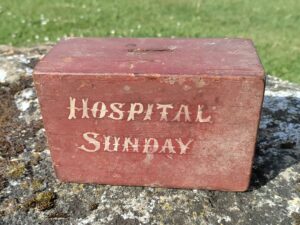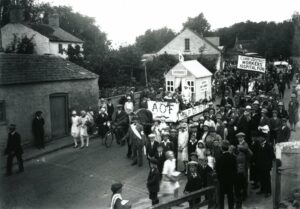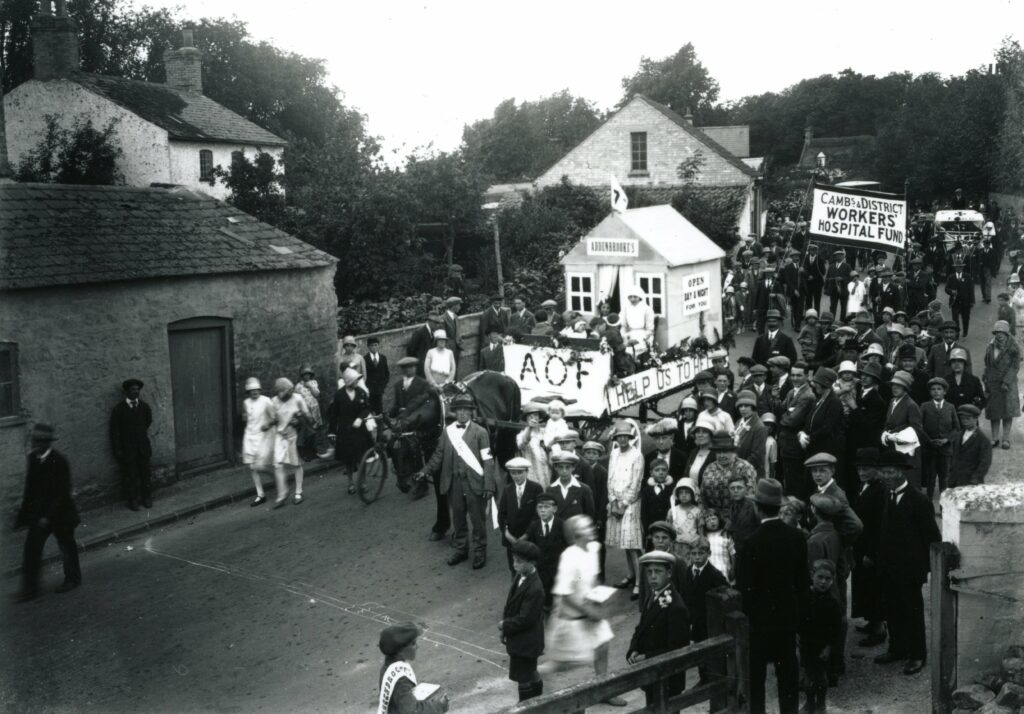Objects from our Store – The Hospital Sunday Collection Box
By Steve Crane
This is the first of what is intended to be a regular series of posts on interesting objects which are not normally on display at the Farmland Museum. The simple painted wooden box shown below has a rather fascinating story to tell. Hospital Sundays may be forgotten by most people, but they were once one of the most important sources of funds for institutions such as Addenbrooke’s Hospital.

The box itself is about 15cm (6 inches) wide, 10cm (4 inches) tall and 7.5cm (3 inches) deep. Apart from the slot on the top where coins can be inserted, there is a hinged flap in the base (normally sealed) for removing the donations. The box probably dates from the early part of the 20th century. It was originally acquired by Haddenham Farmland Museum, and had most likely been used in the Ely area for collecting money for Addenbrooke’s.
Before the NHS was established in 1948, many hospitals were charitable institutions which relied on donations, subscription schemes and other voluntary fundraising efforts. Hospital Sundays originated as far back as the mid-1800s, driven largely by various religious groups and reflecting the historical role of the Church in providing care. By the 1930s, in many places they had developed into elaborate civic celebrations with parades featuring local groups, marching bands and other events such as galas and fetes, though religious services were still an important component. Our box could have been carried in such parades, or may have been permanently installed in a shop or similar location.

Thanks to detailed research carried out by Sid High, we know a lot about the Waterbeach Sunday Hospital Parades, which began in May 1893 and were held every year until 1939 (the current Waterbeach Feasts could be regarded as the modern-day equivalents). The most successful year was 1927, when £219 was raised for Addenbrooke’s Hospital, a substantial sum equivalent to approximately £12,000 today. The collection boxes contributed some £90 towards the total. Unfortunately, the depression had a severe impact on charitable giving, and the 1932 Parade raised just £21 for the Hospital.
Although healthcare was nationalised in the late 1940s, it’s perhaps surprising that Hospital Sunday parades and the associated fundraising continued for many years afterwards. Undoubtedly, this reflected limitations in government funding, but also allowed communities to express their support for their local hospital and to feel they had some involvement in the way it was managed. The Ely Hospital Parades continued until at least 1999, initially for the benefit of the Tower Hospital and later (when that closed) for the Princess of Wales Hospital.

